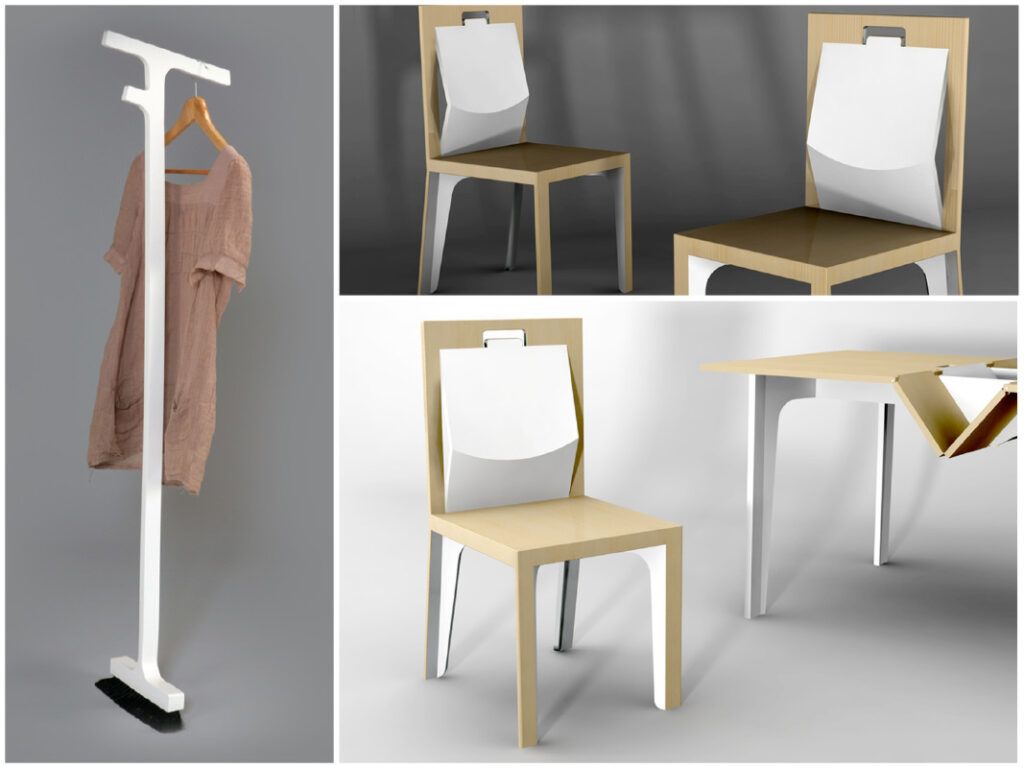Expanding Wood Table With a Twist
Most modern expanding dining tables require the addition of new pieces or a complex series of actions to transform them from a small four-person table to a full dinner-length design. This simplified version is more interactive, functional and engaging than most of its more cumbersome cousins.

The act of pulling on either end of the transforming table is all it takes to flip up the extra leaves in the middle. In its extended form, the resulting configuration also contains central area that is highlighted in white to offset it from the surrounding wood, creating a kind of centerpiece for more formal occasions.
A series of aesthetically similar chairs comes as part of this extendable dining table set – with useful hangar spaces for coats and hats along their back as well as an implicit built-in visual reference to the intermediate point in the converting action at the heart of this design by Iohanna Pani.

“In this project, I explored the environment of the family dining room and the conflict between the private and the public spheres when guests arrive.
The dining room is a place where the whole family meets at the end of the day and is an integral part of our lives as well as a way to understand customs of each culture. People express their individual and social identities through the using of objects in their domestic universe.
In Sophie Chavallier’s research, she describes how the relationship between the family members and between the family and the outside world is reflected in the objects they have.”

“In the moment when guests arrive, a festive ceremony takes place and we make some changes in our house (adding chairs, flowers, unfolding a table), and after all our efforts for the house to look perfect, the objects in this situation do not always express the same perfection. Unfolded tables are commonly very ugly. Moreover, there is an attempt to hide the changes in the house and an example might be trying to hide the fold axis of the opening table.”
“My goal was to design objects that can express this change between the two situations, not only providing the functional needs, but also emphasizing this change and showing the emotional and ceremonial side of that. “Hostis” set features a folding table, chair and a coat hanger. The table is designed to be used for both daily dining, dining with guests and a “in between state” where a centrepiece is created and plays an important role.”




